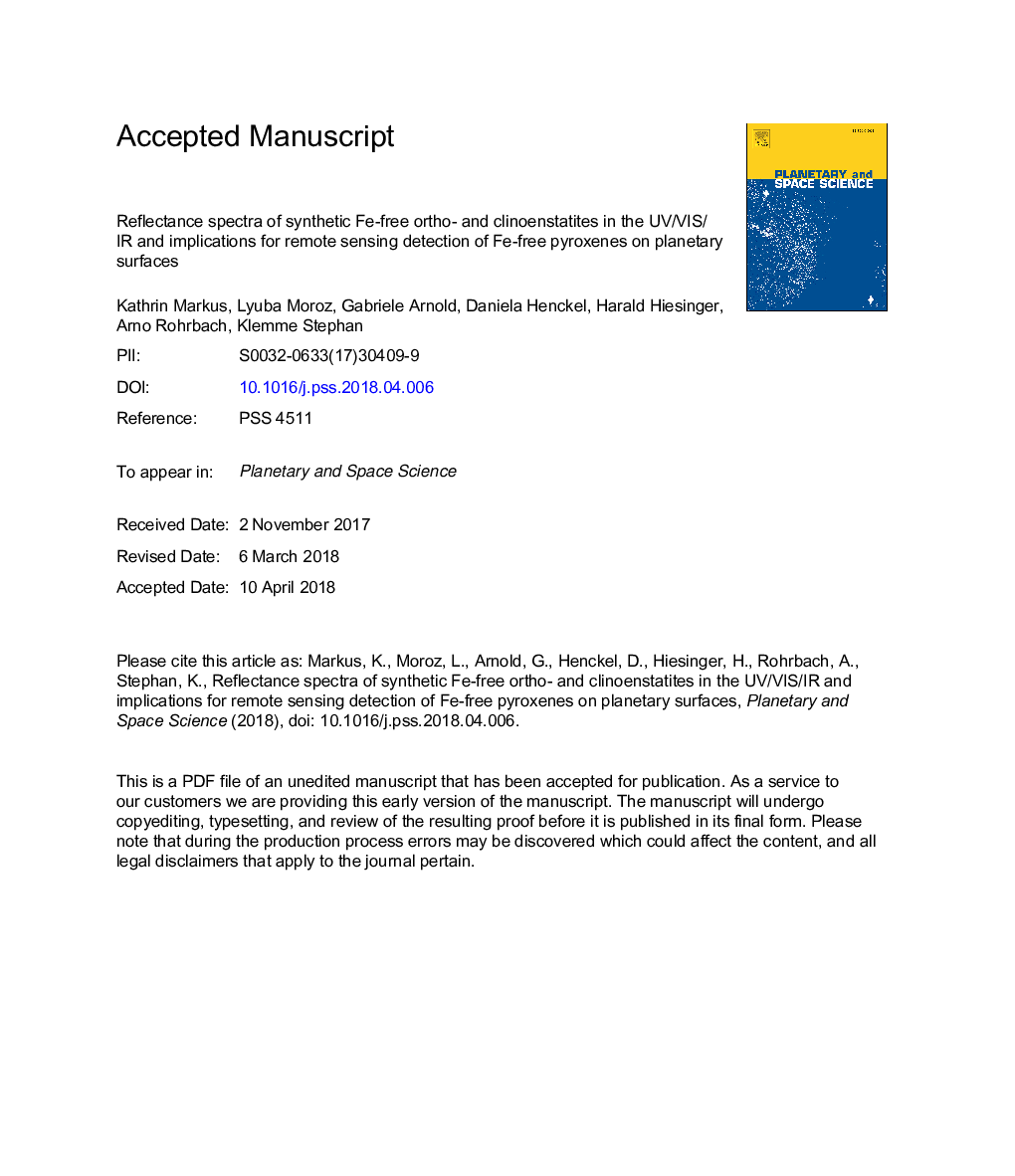| Article ID | Journal | Published Year | Pages | File Type |
|---|---|---|---|---|
| 8142039 | Planetary and Space Science | 2018 | 54 Pages |
Abstract
Both enstatite spectra are very bright in the VIS and NIR and show almost neutral to slightly bluish spectral slopes with a steep absorption in the UV. Very low iron in the enstatites (below â¼0.04â¯wt% FeO) already results in weak albeit noticeable absorptions in the VNIR between 0.4 and 0.9â¯Î¼m. Orthoenstatite and clinoenstatite are not distinguishable based only on their spectra in the VIS and NIR. At the Reststrahlen bands in the MIR a systematic difference in the number and exact position of local minima at â¼10â¯Î¼m between clinoenstatite and orthoenstatite is evident. This can be used to discern between the polymorphs in this wavelength range. Additionally, we can distinguish between Fe-free low- and high-Ca pyroxenes in the MIR.
Related Topics
Physical Sciences and Engineering
Earth and Planetary Sciences
Geophysics
Authors
Kathrin Markus, Lyuba Moroz, Gabriele Arnold, Daniela Henckel, Harald Hiesinger, Arno Rohrbach, Stephan Klemme,
